Spotlights
These spotlights feature completed and in-progress CPCESU projects to showcase some of the great work that has been accomplished by our partners.
If you would like to submit a project to spotlight, please view the Project_Spotlight_Instructions.
Ethnographic Overview and Assessment of African American Homesteading in Lanfair Valley, California
Number: P16AC01804
Non-federal Partner: Fort Lewis College
Federal Partner: National Park Service
Location of Project: Lanfair Valley, California
Principal Investigator: Dr. Rebecca Austin
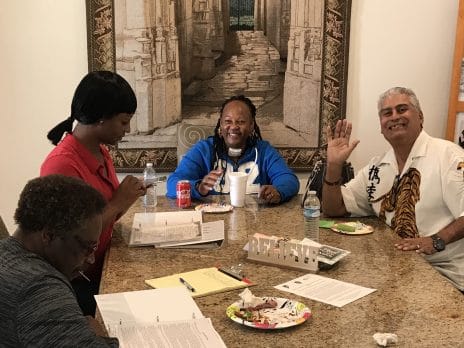
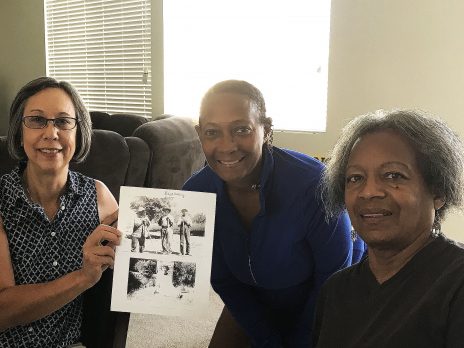
Description of Project:
This project, in conjunction with applied anthropologist Ginny Bengston, of Applied Cultural Ecology, LLC in Arizona, looks at turn-of-the 20th century African American homesteaders in the Mojave Desert, (now the Mojave National Preserve), and the broader African American westward migration. The project is part of the National Park Service Cultural Anthropology program and Obama-era Civil Rights initiatives. As stated by the NPS: “The Cultural Anthropology Program of the National Park Service harnesses the power of research and communication to connect cultural communities with places that are considered essential to their identity.” It is common for minorities’ stories to be missing from public history and this study is one attempt to remedy perceptions about homesteading in general, westward migration, and the stories of post emancipation life for African Americans.
Project Start and End Date: 09/30/2016 to 06/20/2020
Total Project Funding: $214,328.00
Project Outcome: Interviews with homesteader descendants were conducted in 2018 and a reunion with descendants was held in March 2019 in Ontario California. More than 65 people attended the reunion
Students Support: Yes
Mitigate Endangered Bird Habitat Prior to Tamarisk Defoliation by the Northern Tamarisk Beetle Project Award
Number: P17AC00904-0001-B001
Non-federal partner: The Arboretum at Flagstaff
Federal partner: National Park Service
Location of project: Grand Canyon National Park
Principal investigator: Dr. Kristin E. Haskins
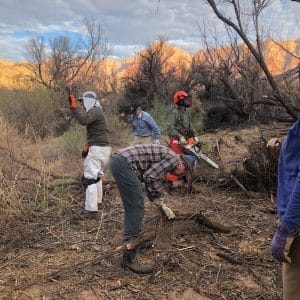
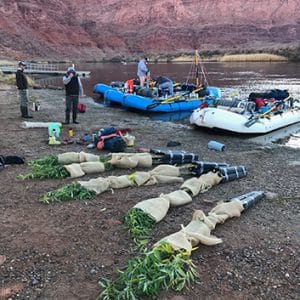
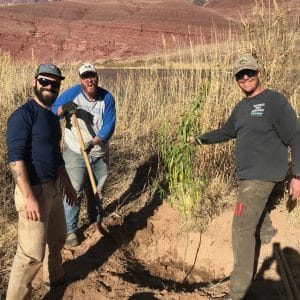
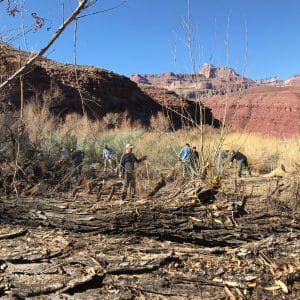
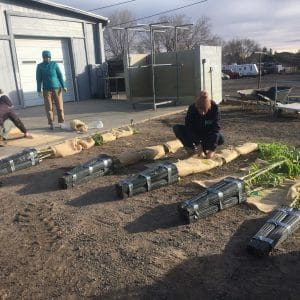
Description of project: The Arboretum at Flagstaff, in partnership with Grand Canyon National Park and Mariposa Consulting, is conducting restoration work at two sites along the Colorado River, Cardenas and the Grand Canyon Youth (GCY) Camp. The goals at Cardenas are to remove invasive tamarisk, also known as salt cedar, (Tamarix spp.) and replace the removed vegetation with native cottonwoods and willows. Additionally, the project will support the removal of another invasive, pepperweed (Lepidium latifolium). Post-planting monitoring and the implementation of repeat photography from established photopoints will provide important feedback on restoration methods and success. These activities will improve both the natural environment and the habitat for the Southwestern Willow Flycatcher (Empidonax traillii extimus), an endangered species.
Project start/end dates: July 18, 2017 – December 21, 2019
Project cost: $83,785.
Project successes: Work along the Colorado River can be difficult due to logistics, but rewarding beyond belief! Without the help of many volunteers and National Park Service staff, this project would not be possible.
Student support: Coreen Walsh, an NAU graduate student, went down with the crew in January as a volunteer to video document the project.
Large Mammal Responses to Wildfire and Landscape-scale Forest Restoration in the Jemez Mountains, New Mexico
Non-federal partner: New Mexico State University
Federal partner: National Park Service and US Forest Service
Location of project: Jemez Mountains, New Mexico
Principal investigator: Gary Roemer and James W. Cain
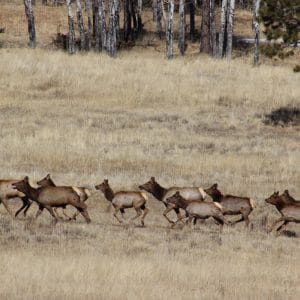

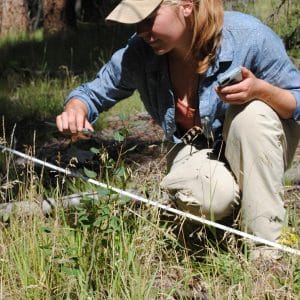
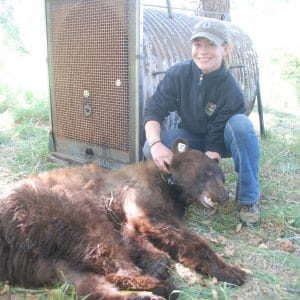
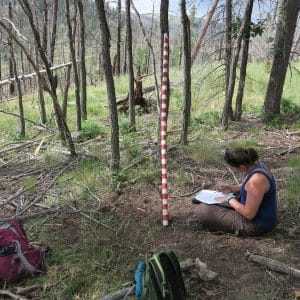
Description of project: Decades of fire suppression, logging, and overgrazing have altered the conditions of Southwestern forests resulting in increased densities of small diameter trees and an overall increase in fuel loads. The increase in tree densities has been associated with decreases in biodiversity, reduced habitat quality for many wildlife species, and more frequent and severe wildfires. Catastrophic wildfires in the western U.S. over the past two decades have resulted in an increased need for forest restoration projects designed to restore historic forest structure, plant species composition, and fire regimes. Both wildfires and forest restoration treatments can result in profound changes to habitat conditions for many wildlife species. Therefore, forest restoration plans should be well-designed, based on the best scientific information, and include monitoring and research programs in an adaptive management framework. Numerous large-scale forest restoration projects are underway across the western U.S. and more are likely to be initiated over the next 10-30 years. Given the large landscapes likely to be subjected to restoration treatments in the future, it is critical for state and federal management agencies to understand how wildlife respond to these treatments in order for them to develop effective management plans and to make informed contributions to the design and implementation planning for restoration projects. Our specific objectives are to: 1) assess changes in abundance of key forage species (including mast producing species) for black bears, mule deer, and elk in response to forest restoration treatments and recent wildfires; and 2) determine habitat selection and space use patterns of black bears, mule deer, and elk in relation to forest restoration treatments and wildfires.
Project start/end dates: This project was initiated in 2012 and is scheduled for completion in 2020.
Student support: To date, the project has involved 2 PhD students and 5 M.S. students from New Mexico State University, New Mexico Highlands University, and Texas Tech University.
Colorado Plateau Dark Sky Cooperative
Non-federal partner: The University of Utah
Federal partner: National Park Service
Location of project: The Colorado Plateau: Utah, Colorado, Arizona, New Mexico
Principal investigator: Stephen Goldsmith
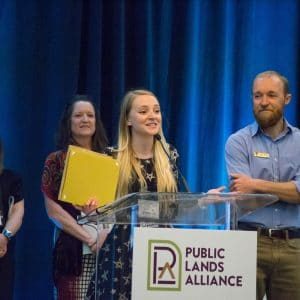
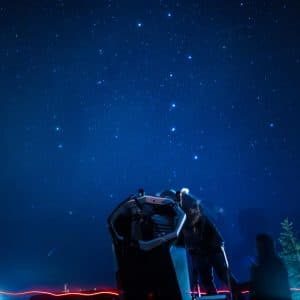
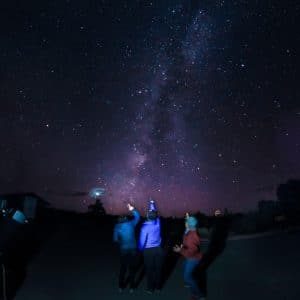


Description of project: The Colorado Dark Sky Cooperative began in 2013 and is still in progress today. The main goal of this project was to preserve the few sights in America where there is unpolluted darkness. They are hoping to limit the amount of light that shines over the Colorado Plateaus’ National Parks, Monuments, and surrounding communities. The night skies over the Colorado Plateau are among the clearest and most visible in the country and this project is working to keep it that way. The formal mission statement is: “The Colorado Plateau Dark Sky Cooperative aims to voluntarily link communities, tribes, businesses, state agencies, federal agencies, and citizens in a collaborative effort to celebrate the view of the cosmos, minimize the impact of outdoor lighting, and ultimately restore natural darkness to the area.” The project is leading the way in protecting natural darkness as a precious resource.
This award recognizes “an exemplary partnership for its stunning achievements to protect and preserve public lands and enhance the experience of visitors.”
Project start/end dates: December 30, 2016 to Present
Project cost: $91,199 to date.
Project successes: The Colorado Plateau Dark Sky Cooperative project hosted a number of events to gain awareness for the fight against polluted skies. Some of these events included community lighting walks, informative dark sky workshops, and community “star parties”. Some of these parties were hosted in conjunction with a series of outdoor concerts by the Utah Symphony for their Great American Road Trip tour in a number of parks around the Colorado Plateau, all of which were either certified by the International Dark-Sky Association, or on their way. The Colorado Plateau Dark Sky Cooperative also trained two graduate students in City and Metropolitan Planning at the University of Utah to complete an exterior lighting inventory for Moab City and Grand County. The Colorado Plateau Dark Sky Cooperative project was also just awarded the 2018 Public Lands Partner Award through the Public Lands Alliance. This award recognizes “an exemplary partnership for its stunning achievements to protect and preserve public lands and enhance the experience of visitors.”
How project met the needs of the federal partner: This project has helped to increase awareness of the value of dark skies and associated threats in and surrounding units of the National Park System on the Colorado Plateau and has fostered a community-based approach for the preservation and enhancement of dark skies amongst a broad range of stakeholders.
Student support: This project trained 2 graduate students to work in Moab on the Lighting Inventory project. The students also completed exterior lighting inventories for the communities of Helper, Bluff, and Torrey, Utah. Helper was the first community in the world to have a detailed lighting inventory using the ArcGIS method. The Colorado Plateau Dark Sky Cooperative serves as an advisor to an undergraduate student participating in the Helper Revitalization Committee- working to enact a dark sky friendly lighting ordinance for Helper and integrate dark sky friendly design into their community master plan.
Historic Structure Report, Mission San José Convento
Non-federal partner: University of Texas at San Antonio, Center for Cultural Sustainability
Federal partner: United States Department of the Interior, National Park Service (NPS)
Location of project: San Antonio, TX
Principal investigator: Professor William Dupont, FAIA, NCARB
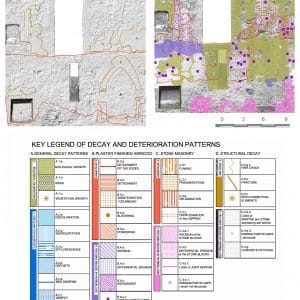
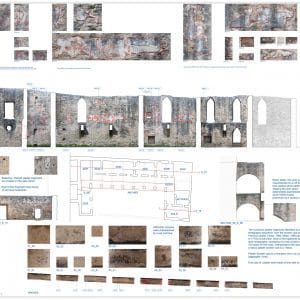
Description of project:
The report offers condition assessment and treatment recommendations for the NPS-managed convento structures of Mission San José, one of five 18th century Spanish colonial missions located in San Antonio, TX. Mission San José has numerous historic designations at the local, state and federal levels. Additionally, it is part of a UNESCO World Heritage Cultural Site—the only one in Texas and one of just 23 in the U.S.
Employing both state-of-the-art photogrammetry software and color-coded mapping protocols established by the International Council on Monuments and Sites (ICOMOS), UTSA researchers are crafting the most detailed survey to-date of the structure. The location of every visible crack, every patch of deteriorating brick and biogrowth, etc., is being recorded. Additionally, laboratory analysis of samples taken from the site is under way to determine geological composition of stone and other materials present in the convento. Finally, per NPS standards, UTSA’s report will trace the evolution of the structure’s construction, evaluate is historic significance, and establish preservation objectives to guide future treatment decisions.
Project start/end dates: The project began August 15, 2017, and is expected to finish October 8, 2018.
Project cost: $99,932
Project goals: Any changes made to a historic property, such as the convento of Mission San José, are guided by the results of a Historic Structure Report (HSR). An HSR provides information crucial to maintaining historic fabric, authenticity and integrity.
Project success: The project’s primary success has been the level of detail to be found in UTSA’s documentation, a result of photogrammetry software. Researchers 100 years from now will know exactly how the structure appeared in 2018 and won’t encounter as much guesswork as they currently do when examining photos from the 19th and early 20th centuries.
Additionally, results of the Historic Structure Report are contributing to the long-term stability of Mission San José: a Park Service engineer has been recruited to assess the structural integrity of the convento, per UTSA’s recommendation.
How Project Met the Needs of the Federal Partner: The project is helping Park Service staff prioritize treatment projects and determine the most cost-effective allocation of maintenance funds
Student support: Yes
UTSA has hired two graduate students and one undergraduate to contribute to the project. Their tasks have included archival research, some writing/editing, production of graphics using Auto CAD software, and participating in presentations to the client.